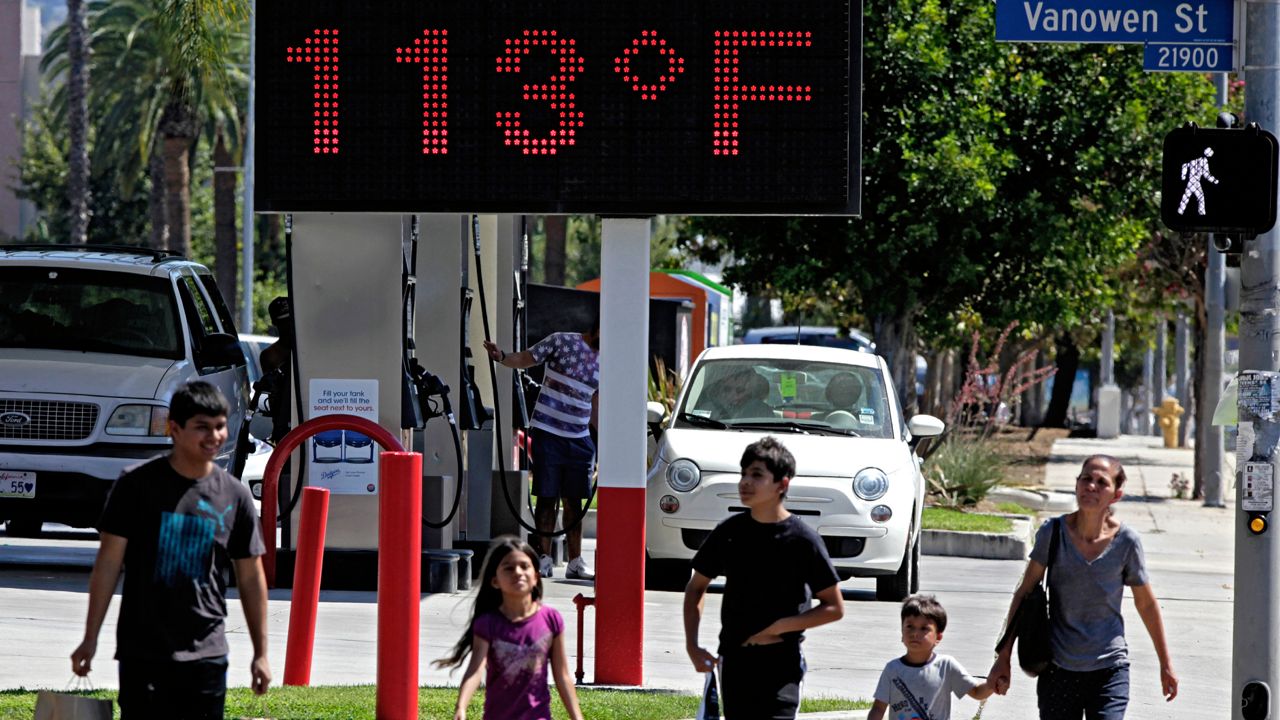SACRAMENTO, Calif. — California could become the first state in the nation to rank heat waves now that the state legislature has passed AB 2238. If signed by Gov. Gavin Newsom, the bill would create an advance warning and ranking system for extreme heat events similar to existing systems for hurricanes, tornadoes and wildfires.
“Extreme heat is a public health crisis,” AB 2238 author Luz Rivas, D-San Fernando Valley, said in a statement. “Climate change has quickly exacerbated this problem. Californians underestimate the deadly health impacts of these weather events, and as a result, they are not proactively preparing.”
The bill’s passage comes as the southern part of the state experiences exactly the sort of extreme heat AB 2238 is designed to warn about. The Southland is currently under a weeklong heat dome driving temperatures above 90 degrees for multiple days.
The U.S. Centers for Disease Control and Prevention defines extreme heat as summer temperatures that are much hotter than average. A Climate Vulnerability Assessment from the LA County Sustainability Office earlier this year found that extreme heat events are expected to increase tenfold from about once every other year to twice a year by 2050.
“Heat waves are a silent killer, particularly of the elderly, our immigrant communities and those with other health conditions who can be protected by this early warning system,” California Insurance Commissioner Ricardo Lara, and AB 2238 sponsor, said in a statement.
A letter of support for the bill from a coalition of California doctors earlier this year said total mortality increases 8% on the hottest days during an average Los Angeles summer, with consecutive days of intense heat causing as many as 30% more deaths. Seniors, children and individuals with chronic medical conditions are most at risk, as are outdoor workers, individuals in low-income communities and Black and Latinos.
AB 2238 was born from Lara’s California Climate Insurance Working Group, which he created in 2019 after taking office. Bringing together insurance experts and environmentalists, the group found wildfires, flooding and extreme heat presented major climate threats to the state and recommended solutions to reduce their impact. One of the group’s proposals was ranking heat waves to provide levels of risk and more specific warnings to protect vulnerable communities.
Advance warning systems for hurricanes, tornadoes, wildfires and other extreme weather events have long provided notice to people and businesses, giving them a chance to escape from harm. AB 2238 cited California’s “red flag” wildfire warnings and the National Oceanic and Atmospheric Administration’s tropical storm naming system as providing valuable templates for an extreme heat ranking system.
Exactly how the extreme heat ranking and warning system will function has not yet been determined, but it could be a number system, as used with hurricanes, with higher numbers indicating more severity, or a color system, as used with fire danger, with red indicating the most dire conditions.
What sorts of response those numbers or colors would prompt could be a mix of individual responses, such as telling people to hydrate the day before or to stay indoors, as well as advisories to governments at the local level to open cooling centers or issue a state of emergency.
AB 2238 requires the California Environmental Protection Agency to develop a statewide extreme heat ranking system by Jan. 1, 2024, and to submit a study about the costs of past extreme heat events to the Integrated Climate Adaptation and Resiliency Program, which is tasked with coordinating local efforts to adapt to the impacts of a warming planet.
The agency would then need to develop a plan to communicate extreme heat rankings to the public with the Office of Emergency Services and other relevant agencies and organizations. It would also develop guidelines for local governments to plan for extreme heat events.



